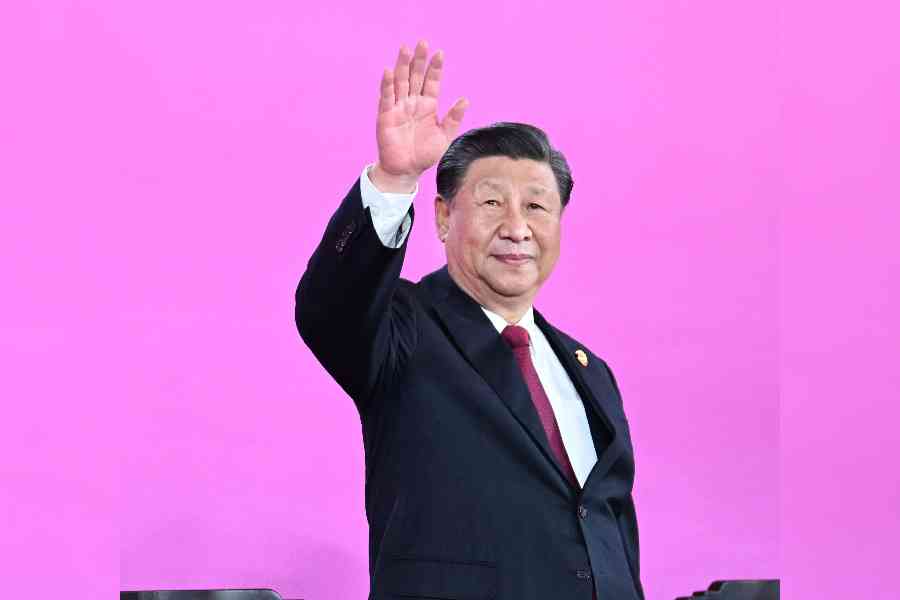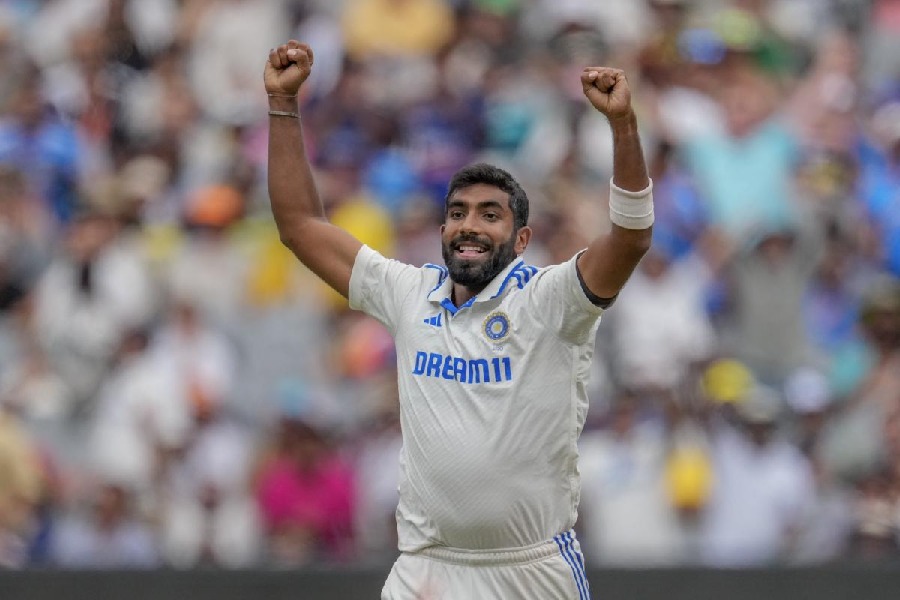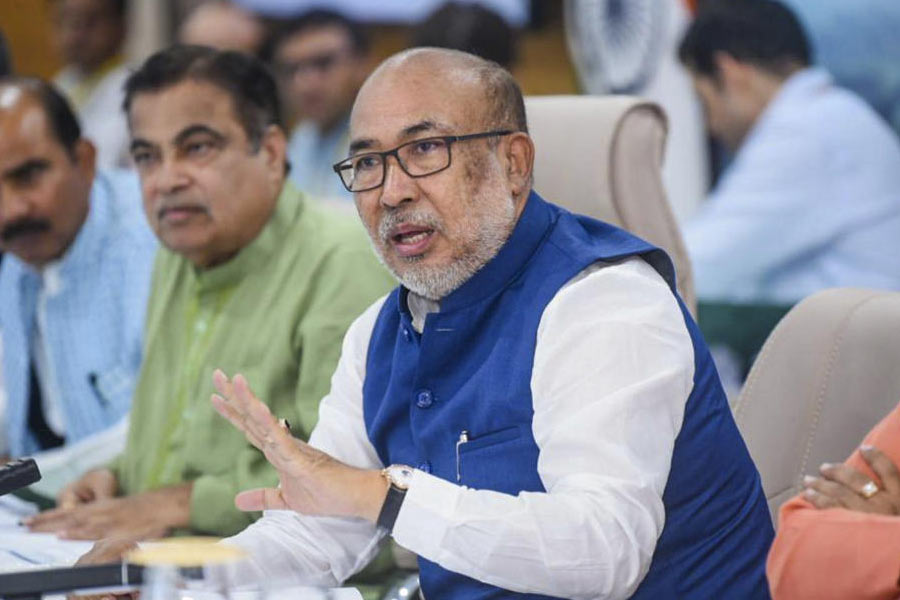Sharadiya Srijit” has struck once again! Both his Puja releases, Dawshom Awbotaar and Durgo Rawhoshyo, have done wonders at the box office and on OTT, and filmmaker Srijit Mukherji has once again emerged as the first boy of Puja releases. A t2 chat with Srijit.
Let’s start with the innovative introduction scene of Byomkesh in Durgo Rawhoshyo. From concept to staging, it brings a smile to your face. From going into the theatre to watch Chiriakhana and then having the conversation outside the theatre, how did you come up with this idea?
The idea was to establish Byomkesh Bakshi as a real-life character. To do that, I needed to merge the reel and the real and look at a world where the possibility of Byomkesh and Ajit actually existed along with Satyabati, and in that world certain things needed to be addressed. Obviously, Ajit and Sharadindu (Bandyopadhyay) became the same person. Byomkesh’s adventures are chronicled by him. The only solution that came forward is possibly Sharadindu was Ajit’s pseudonym when he wrote about Byomkesh’s adventures.
If that is the scenario, and under only those circumstances you see Byomkesh and Ajit going to the movie hall to watch a film based on Ajit’s writing published under Sharadindu’s name. That is what I did. And that enabled me to also incorporate the mention of Satyajit Ray and Uttam Kumar... adapting the author’s story into a film.
It was kind of a novel introduction to Byomkesh Bakshi as a person who is real. The essence of that was merging Ajit and Sharadindu under the obtuse pseudonym practice. It is sad though that some ‘Einsteins’, I heard somewhere, were confused about how Sharadindu and Ajit can exist parallely in a universe. So much for imagination and intelligence!
The final scene delivers a surprise! Very witty. Once again nicely conceived; and we see that the pen has returned in the end. We also see a closeup of the smile and beard. What’s the story behind this scene?
I wanted to end with a parting shot. I wanted to end with a cliffhanger, which is why I made the antagonist return. I didn’t kill him off. I made him vanish and made him come back, albeit with a limp and a pen, which is his favourite weapon. I wanted to end on that tantalising note. It is something that I added to the narrative to make it more interesting and end on a high. And I also wanted to take advantage of Debraj’s great performance with that eerie smile.
In the climax of both Durgo Rawhoshyo and Dawshom Awbotaar, Anirban (Bhattacharya) runs after the antagonist and tries to catch him/her, and they both jump. Why the same outcome for both film and series?
That’s a very interesting observation (laughs). I didn’t even think about it consciously. Subconsciously, this idea of Anirban, the truth seeker in both cases, chasing the antagonist and not getting him or her to justice led to the tragic note on which Dawshom Awbotaar ends. In the case of Durgo Rawhoshyo, there is still the redeeming ending of Godadhor and Tuslhi coming back. It’s a happy ending before the tantalising cliffhanger. But in the case of Dawshom, I wanted it to end in a tragedy. I wanted that sense of unfulfillment to continue plaguing Poddar’s life, whose life we see from the beginning in the middle of all the witty repartees, one-liners and police procedural; a life over which looms the large shadow of a very unhappy childhood and a sense of loss and separation.
Also, both the film and series use words from different poems as clues. Why?
For Dawshom, the use of poetry was naturally an extension of the spirit of 22shey Srabon, which was based on a lot of poetry. In the case of Durgo..., the poem that leads to the final clue is there in the original text. The use of poetry in Dawshom... was definitely conscious and was used keeping in mind the 22shey Srabon universe.
Congratulations on the success of Dawshom Awbotaar. How does it feel to see your film emerge as the highest-grosser among the four films this Puja?
It feels really good. The other films in the fray were very strong as well, in terms of the distribution of the show timings, and the power of the production houses. And of course the films themselves. For the 10th consecutive time, our team has topped the Pujas in terms of box office collection. That’s great. In the last three or four years I have noticed the discussion of the box office collection of a film often precedes how the film is, especially when you see the celebration around Pathan, Jawan, Gadar 2, KGF, Pushpa and Tiger 3. Which kind of tells me that the tradition of event films is kind of here to stay. Dawshom Awbotaar, with Bengal’s first cop universe, the return of Probir and Poddar, the prequel of 22shey and Vinci Da, was one such event film in Bengal. It feels good to be validated.
The chemistry between Probir and Poddar has come in for a lot of praise. What’s your favorite compliment?
My favourite compliment is when people ask when are they coming back next... it has clicked so majorly... that aspect of the film has overshadowed everything else, which is what it was meant to do. With Dawshom, I wanted to end one franchise and take off on the other. It was like a set-up of a new franchise where it is a cop universe, it is a buddy film, where it’s about two new detectives coming into the fray. The reactions were spot on.
The film has polarised the audience. Some love it as a buddy cop movie. Some found it predictable. Your thoughts?
First of all the film is not a whodunit. So the question of finding it predictable or not does not arise. Not a single person came up and told me that they could predict that these were serial killings to protect one personal revenge murder. What could be predicted was that Moitreyee was part of the plan but that was understandable.
I said from the beginning it is not a matter of who. If I am showing that it is Bishwaroop who is committing the murders... the only other person in the midst of the characters is Moitreyee... so it is obvious that Moitreyee must have something to do with this. Why the murders were planned to cover up... that is the essence of the film. It is a why and a howdunit. It was never a whodunit.
Since it is from the 22shey Srabon universe people thought that there might be a twist in the end. It is there but it is not a twist. Everyone understood Moitreyee and Bishwaroop were on to something here... that predictability is there in the genre of the film. The people who loved the film for its buddy cop aspect got the film correctly because it was always meant to be one. It is a howdunit and a whydunit in terms of a thriller subtype and overall it was a franchise set-up film that set up the chemistry between Probir and Poddar.
Why the traffic snarl scene? How does it add to the story? In a previous scene at a bar, the swag and authority of Poddar were already established.
It adds to the story because it sets up the character of Poddar. There are multiple scenes and dialogues that set up Probir’s swag and personality. To kind of balance that I needed more scenes to set up Poddar’s personality, especially when it is a Probir-Poddar franchise set-up film. And that is something that I have been saying from Day One... that it is supposed to be the start of a franchise.
Since Probir admitted that both Probir and Poddar were authorities on serial killing, why was Probir called in as the only expert in 22shey Srabon?
Poddar was not an authority. He was an inspector who worked on his own in a different department and he had an interest in serial killing. This was his first case. He can’t be called an authority. Probir is the only authority here.
The second climax scene of Anirban and Jaya Ahsan was overlong. It just went on and on, reiterating the same thing. Why?
That scene did not have a single line of repetition. It plugged in the gaps... the various questions that might have formed in the minds of the audience about Moitreyee’s plan of how the things unfolded, of why they don’t have any roots in Calcutta, why Bishwaroop remained faceless and nameless and why he remained disjointed from Moitreyee in terms of a social entity in Calcutta; then their exodus to Kanpur, and then the entire history, the planning and the psychology and modus operandi of Moitreyee... to hide one murder in the guise of serial killings. I had to take care of all angles and aspects of the plan... for that, it felt slightly long which I agree with. But I had to do that.
What are you working on now? When do you start shooting your next?
The next thing I am working on is the film with Dev. That’s the next in line.










